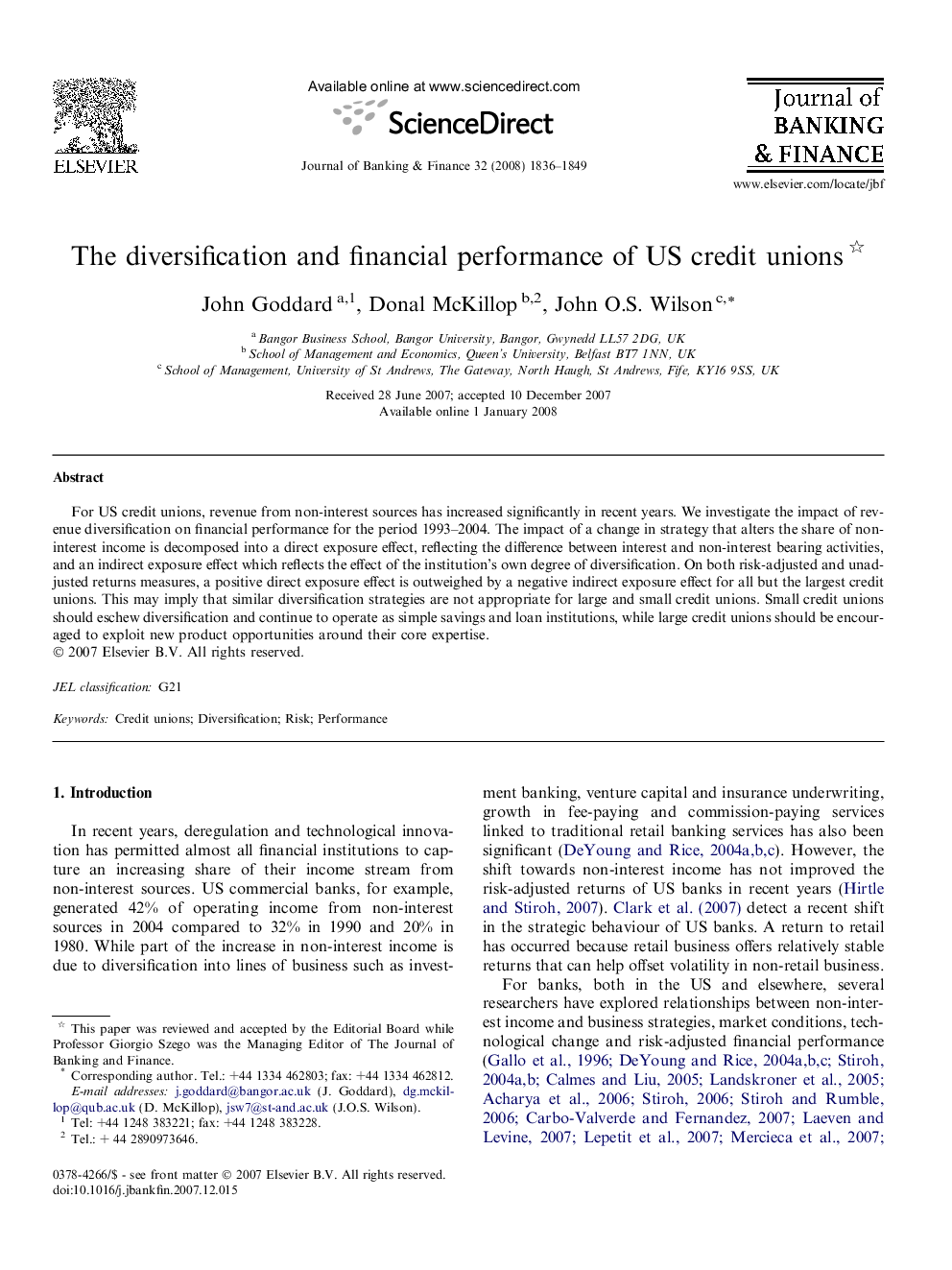| Article ID | Journal | Published Year | Pages | File Type |
|---|---|---|---|---|
| 5090823 | Journal of Banking & Finance | 2008 | 14 Pages |
Abstract
For US credit unions, revenue from non-interest sources has increased significantly in recent years. We investigate the impact of revenue diversification on financial performance for the period 1993-2004. The impact of a change in strategy that alters the share of non-interest income is decomposed into a direct exposure effect, reflecting the difference between interest and non-interest bearing activities, and an indirect exposure effect which reflects the effect of the institution's own degree of diversification. On both risk-adjusted and unadjusted returns measures, a positive direct exposure effect is outweighed by a negative indirect exposure effect for all but the largest credit unions. This may imply that similar diversification strategies are not appropriate for large and small credit unions. Small credit unions should eschew diversification and continue to operate as simple savings and loan institutions, while large credit unions should be encouraged to exploit new product opportunities around their core expertise.
Related Topics
Social Sciences and Humanities
Economics, Econometrics and Finance
Economics and Econometrics
Authors
John Goddard, Donal McKillop, John O.S. Wilson,
